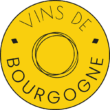Spring has sprung. The first signs of life on the vineyard. Finally, some greenery appears again. Time for a new vintage!
In early spring, the vines start ‘weeping’. By this is meant that the first juices come up to the end of the pruned branches. As soon as the temperature rises (and stays above 10 degrees), the branches regrow buds. Those buds swell, open and then a new shoot emerges. Beautiful, but also exciting every year in Burgundy. The buds are still very delicate and can be destroyed by frost or a hailstorm in spring, which can cause the entire harvest to be lost. This is called blossom fall or ‘coulure’ as the winemaker will call it.
Flowers
Then the first leaves emerge and small white flowers appear in bunches. The little flowers on the vines are perfect flowers because they fertilise themselves. From the fertilised flowers the grapes later grow. If all goes well, the vines then start growing vigorously and offshoots appear everywhere. Too many offshoots cost the vine a lot of energy. That is why shoots are often pruned off. Some vintners specifically prune away the downward-facing shoots to ensure that all shoots grow upwards. This reduces the quantity of the harvest, but it increases the quality. Vines that produce a limited quantity produce better grapes. And that is the most important thing for many winemakers in Burgundy.
Leaves that block sunlight on the grapes are also removed. But at the same time, it is important for the winemaker to leave enough leaves to prevent the grapes from burning. After all, the sun can be unrelenting in Burgundy, even as early as spring. The grapes now grow steadily in June and July and the bunches then reach their final size. The grapes are still incredibly acidic at this time, though.
Vérasion
In mid- to late summer, green berries begin to change colour. From plant-green to yellow, pink, red or purple. The bunches then also begin to ripen. The sugar content in the fruit increases. This period is called ‘vérasion’. It is the best time of the year in the vineyards. Some winemakers do another ‘green harvest’ before vérasion begins. Excess weight of green immature bunches is removed so that the vines can use all their energy for the already ripe grapes. The wood of the vines themselves also continues to ripen throughout the summer, becoming browner and harder.
Between September and November is harvest time. In about six months, the grapes have – if all goes well – reached perfect ripeness. When that time comes, winemakers and harvesters work long hours to pick the grapes all at exactly the right time. For many winemakers, this is done by hand. Sometimes from biological conviction, sometimes from quality considerations. But also out of necessity: many steep slopes simply cannot be worked by machine. After picking, the grapes do not ripen any further. Now the vinification process can begin!
